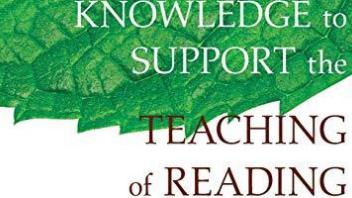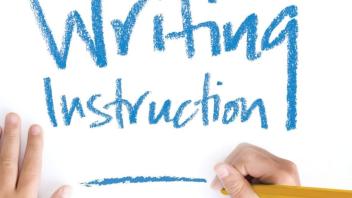Featured booklists
Themed Booklist
Teaching Reading
Themed Booklist
The Cognitive Science of Reading
Themed Booklist
Reading Motivation and Reading Aloud
Themed Booklist
Teaching Writing
Themed Booklist
Learning Differences
Themed Booklist
In the Classroom: Teaching Children on the Autism Spectrum
Themed Booklist
About Autism: Books for Parents and Educators
Adult Education Books
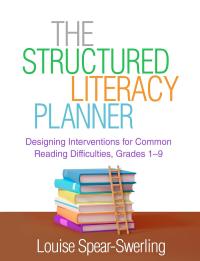
This highly practical book walks educators through designing Structured Literacy (SL) interventions for students with common types of reading difficulties — word reading, comprehension, or a combination of both. Louise Spear-Swerling offers tools for assessing students’ reading profiles and tailoring SL to their needs. The book includes case studies, sample lesson plans addressing both early and advanced stages of reading, instructional activities, and application exercises for teachers. A chapter on English language structure presents essential foundations for implementing SL effectively. The companion website features a knowledge survey about language structure (with answer key), as well as downloadable copies of the book’s 14 reproducible forms.
The Structured Literacy Planner: Designing Interventions for Common Reading Difficulties, Grades 1-9
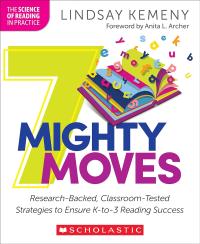
In this no-nonsense guide, primary reading expert and classroom teacher Lindsay Kemeny shares seven ways K–3 teachers can modify what they are currently doing to transform their reading instruction. Each chapter focuses on a critical area of foundational reading–from the most efficient ways to teach phonemic awareness and phonics to the most effective ways to boost comprehension. Kemeny clears up confusing terms and concepts and offers up “do-tomorrow” strategies to help kids acquire reading skills efficiently and successfully transfer those skills to their reading. Readers will find the literacy routines and lessons Kemeny uses every day with her students detailed in the book, along with links to video demonstrations showing how she puts them into practice.
7 Mighty Moves
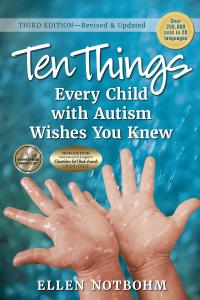
Framed with both humor and compassion, the book describes 10 characteristics that help illuminate — not define — children with autism. A child’s voice leads into each chapter. Notbohm’s personal experiences as a parent of children with autism and ADHD and a contributor to numerous publications, classrooms, and conferences coalesce to create a guide for all who come in contact with a child on the autism spectrum.
Ten Things Every Child with Autism Wishes You Knew
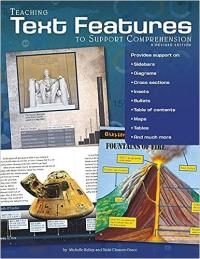
When K-5 students understand how to read text features like diagrams, bullets, insets, and tables, they are reading the whole page ― essential for deep comprehension of nonfiction and fiction text. In this revised edition, educators Kelley and Clausen-Grace show you how to explicitly teach K-5 students to read text features, use them to navigate text, and include them in their own writing.
Teaching Text Features to Support Comprehension
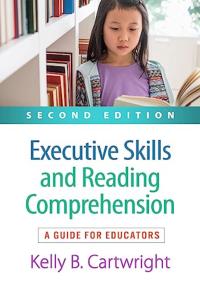
A teacher-friendly explanation of executive skills — such as planning, organization, cognitive flexibility, and impulse control — and their role in reading comprehension. Detailed examples illustrate how each skill is deployed by strong comprehenders and ways to tailor instruction for students who are struggling.
Executive Skills and Reading Comprehension: A Guide for Educators

In this comprehensive guide to developing, implementing, and improving dual-language programs, internationally recognized experts Hamayan, Genesee and Cloud address every aspect of a successful dual-language program, including: specific strategies for building community support for the program; guidance for choosing a program model and planning curriculum across grade levels; best-practice teaching strategies that promote content learning and language development; and guidelines for assessment and linking assessment to standards
Dual Language Instruction from A to Z: Practical Guidance for Teachers and Administrators
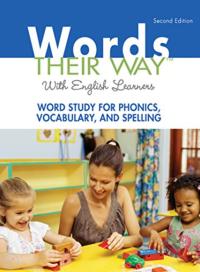
This second edition includes all of the teacher-friendly resources of the first edition, with the added bonus of an extensive media component featuring multiple videos, ready-made word sorts, and a “create-your-own word sorts” tool. Another highlight is the inclusion of a new chapter addressing the most advanced level of word study, Derivational Relations, which will allow teachers to design word study lessons for students at upper elementary through high school levels.
Words Their Way with English Learners: Word Study for Phonics, Vocabulary, and Spelling (2nd Edition)

Students with weak executive function skills need strong support and specific strategies to help them learn in an efficient manner, demonstrate what they know, and manage the daily demands of school. This book shows teachers how to do exactly that, while also managing the ebb and flow of their broader classroom needs.
Boosting Executive Skills in the Classroom: A Practical Guide for Educators
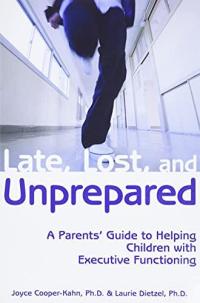
Executive functions are the cognitive skills that help us manage our lives and be successful. Children with weak executive skills, despite their best intentions, often do their homework but forget to turn it in, wait until the last minute to start a project, lose things, or have a room that looks like a dump! The good news is that parents can do a lot to support and train their children to manage these frustrating and stressful weaknesses.
Late, Lost, and Unprepared: A Parents’ Guide to Helping Children with Executive Functioning
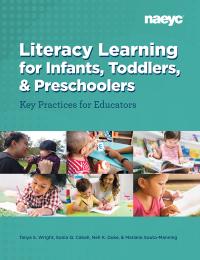
Birth to age 5 is a critical period in building the foundation for later success in reading and writing. Educators play a vital role in nurturing young children’s early language and literacy knowledge and skills. However, the specific practices that support literacy development in early childhood are often different than those used with older children. The authors discuss how educators can support five important areas of young children’s early literacy development: language and knowledge; print concepts; sounds and letters; writing; and text comprehension.
Literacy Learning for Infants, Toddlers, and Preschoolers
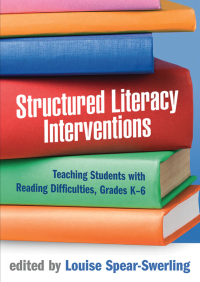
Comprehensive and evidence-based, Structured Literacy (SL) approaches place a high value on explicit, systematic, and sequential instruction. This book brings together leading experts on key components of literacy to help K–6 teachers design and target SL interventions for particular student profiles. Chapters identify effective features of instruction for supporting phonological awareness, basic and multisyllabic word decoding, spelling, reading fluency, vocabulary, oral and reading comprehension, and written expression, especially for at-risk readers and those with disabilities.
Structured Literacy Interventions Teaching Students with Reading Difficulties, Grades K-6
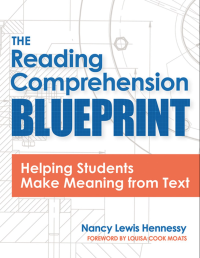
This book offers teachers a complete framework for organizing instruction, aligned with the language comprehension strands of Scarborough’s Reading Rope. In-depth chapters are devoted to each facet of reading comprehension, including vocabulary, syntax and sentence comprehension, text structures, background knowledge, and levels of understanding and inference. Educators will also find practical guidance and tools for planning their units and lessons, adapting to the needs of individual students, and assessing student progress.
The Reading Comprehension Blueprint
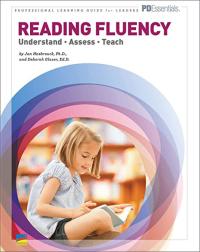
An accessible resource to help teachers understand the complex, essential, and often misunderstood skill of reading fluency. The book defines the complex skill of reading fluency, presents an overview of current research, offers practical guidance for assessing and developing students fluency, and includes specific skill-development activities In the companion Professional Learning Guide for Leaders, classroom teachers, specialists, and instructional leaders can go deeper into professional study using the tools provided.
Reading Fluency
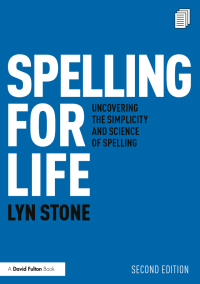
There is a myth that English spelling is unnecessarily complex. It is spread by those who don’t understand the writing system. Using a synthesis of theory, research, and teaching experience, the fascinating nature of English spelling is systematically teased out. The examples and exercises offer an encouraging, accessible way to implement the program of study and strive to reveal the beauty of spelling. Aided by example lessons, formative assessments and unique tools, this highly acclaimed overview of spelling succeed in developing theory and practice in the writing system for teacher and student alike.
Spelling for Life
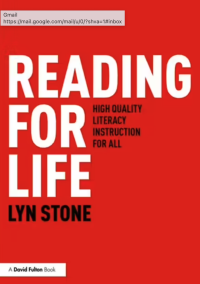
This accessible guide bridges the gap between research and practice, translating academic findings into practical suggestions and ready-to-use techniques. It helps educational practitioners make informed decisions about which teaching methods to reject and select, and empowers parents to ask the right questions of professionals and policymakers. This book is a timely exploration of poor teaching methods and is an innovative, fresh assessment of how high-quality literacy teaching can be provided for all.
Reading for Life
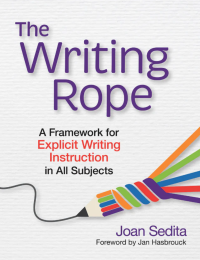
Learn about the five fundamentals of a comprehensive writing curriculum: critical thinking, syntax (sentences), text structure, writing craft, and transcription (spelling and handwriting). Teachers of Grades 4-8 will get crystal-clear guidelines that demystify the process of helping students learn to write and write to learn across academic content areas. And with dozens of included templates, handouts, and other resources — available for download online — teachers will have all the tools they need to design and deliver explicit, high-quality writing instruction.
The Writing Rope: A Framework for Explicit Writing Instruction in All Subjects

This teacher’s manual includes research-based lesson design, alignment with the Common Core, sequence of skills for instruction, techniques for one-to-one and classroom instruction, and model dialogues. Each unit Includes an overview of general information for the teacher, clarification of points teachers sometimes confuse, steps for initial instruction and subsequent lessons, and sample activities and assignments.
Writing Matters: Developing Sentence Skills in Students of All Ages
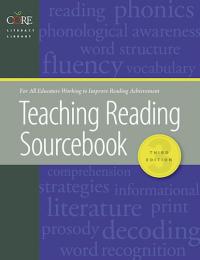
This updated edition supports educators in bridging the gap between evidence-based reading research and actionable instructional strategies. Organized according to the elements of explicit instruction (what? why? when? and how?), the Sourcebook includes both a research-informed knowledge base and practical sample lesson models. It teaches the key elements of an effective reading program, based on the science of reading — phonemic awareness, decoding, vocabulary development, fluency, and comprehension — in a practical hands-on teacher’s guide. The third edition also includes a chapter on reading instruction within a MTSS framework.
Teaching Reading Sourcebook: Third Edition
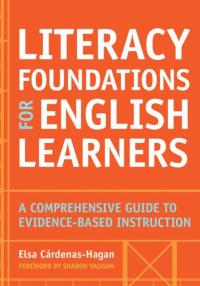
This accessible book will give teachers the knowledge base they need to help English learners develop strong literacy skills and achieve academic success. Aligned with IDA’s Knowledge and Practice Standards, this book prepares current and future educators to teach English learners the key components of language and literacy, as first described in the National Literacy Panel report.
Literacy Foundations for English Learners

Using sentences from more than one hundred popular stories and novels as models, this workbook offers extensive practice in four sentence-manipulating techniques: sentence unscrambling, sentence imitating, sentence combining, and sentence expanding. By playing with hundreds of sentences from selections like Charlotte’s Web and the Harry Potter series, children learn to write their own sentences in more effective and interesting ways. At the same time, they improve their reading skills by discovering the story in the sentence.
Sentence Composing for Elementary School
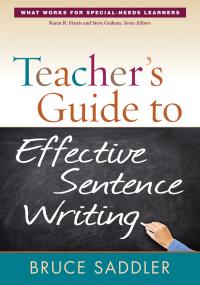
This practical book provides explicit instructions for teaching sentence-level skills to students who have difficulties in this area. The author explains the key role of sentence combining in the writing process and presents effective techniques for instruction and assessment. Numerous sample lessons, practice activities, planning tips, and grammatical pointers make it easy for teachers to incorporate sentence combining and construction into the writing curriculum at all grade levels (2-12).
Teachers Guide to Effective Sentence Writing
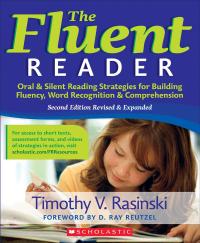
This 2020 update of Rasinski’s groundbreaking book includes coverage of the latest research on fluency, teaching strategies based on that research, new classroom vignettes, and suggestions for using a variety of texts to teach fluency such as poetry, speeches, and monologues and dialogues. You’ll also find background information, assessment tools, step-by-step lessons, and teaching tips — plus video clips showing the strategies in action.
The Fluent Reader: Oral and Silent Reading Strategies for Building Fluency, Word Recognition and Comprehension
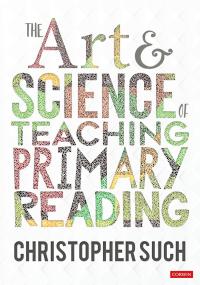
A guide to the science behind reading and its practical implications for classroom teaching in primary schools. The book explores the key technical and practical aspects of how children read with strong links to theory and how to translate this into the classroom. Bite-size chapters offer accessible research-informed ideas across all major key topics including phonics, comprehension, teaching children with reading difficulties and strategies for the classroom.
The Art and Science of Teaching Primary Reading
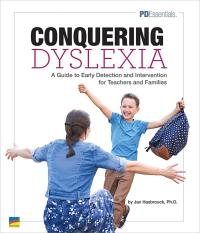
Dyslexia is no longer a mystery. MRI scans and other tools of neuroscience have advanced our understandings in the last decade. We now know what to do to help students become skilled, confident learners. In Conquering Dyslexia, Dr. Hasbrouck shares the instructional approaches that work best for children who have this disorder, and the most current information for parents so they can advocate for their children and communicate with educators effectively. This book addresses: what is dyslexia, how to identify it, early diagnosis and intervention, teaching students, and supporting English Learners.

